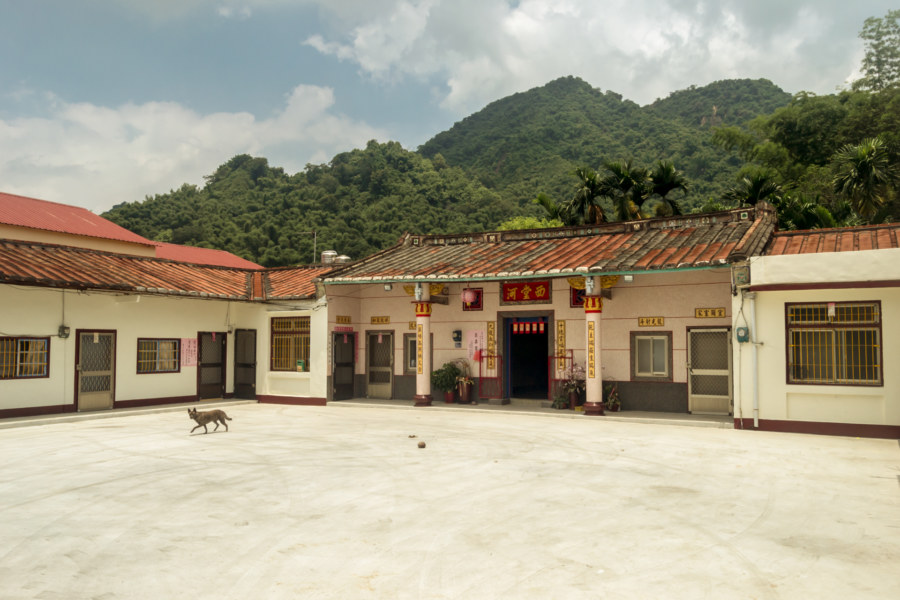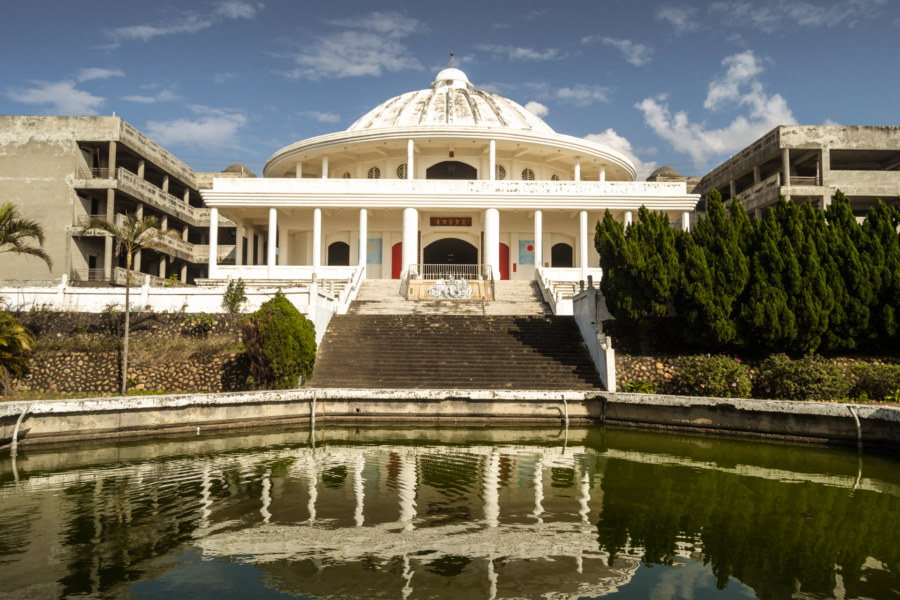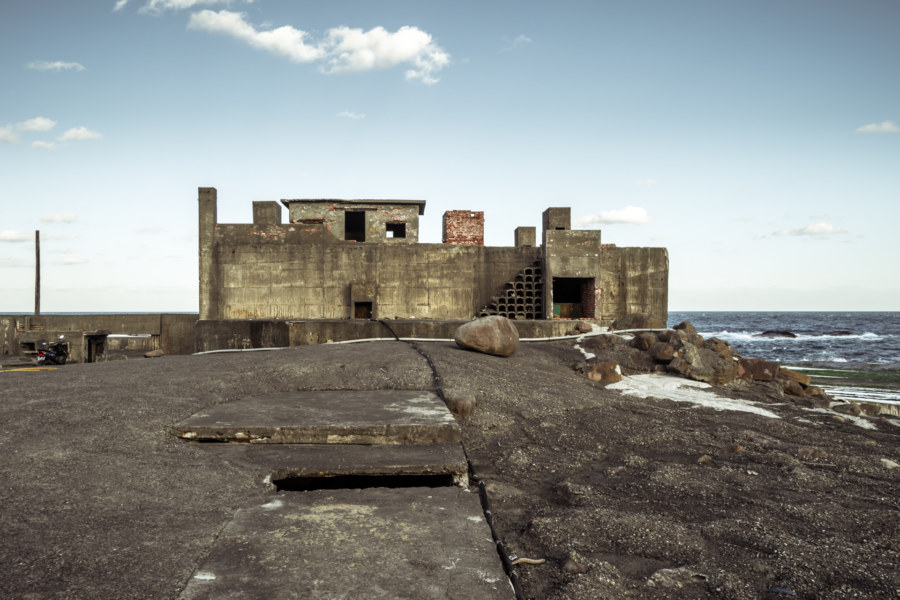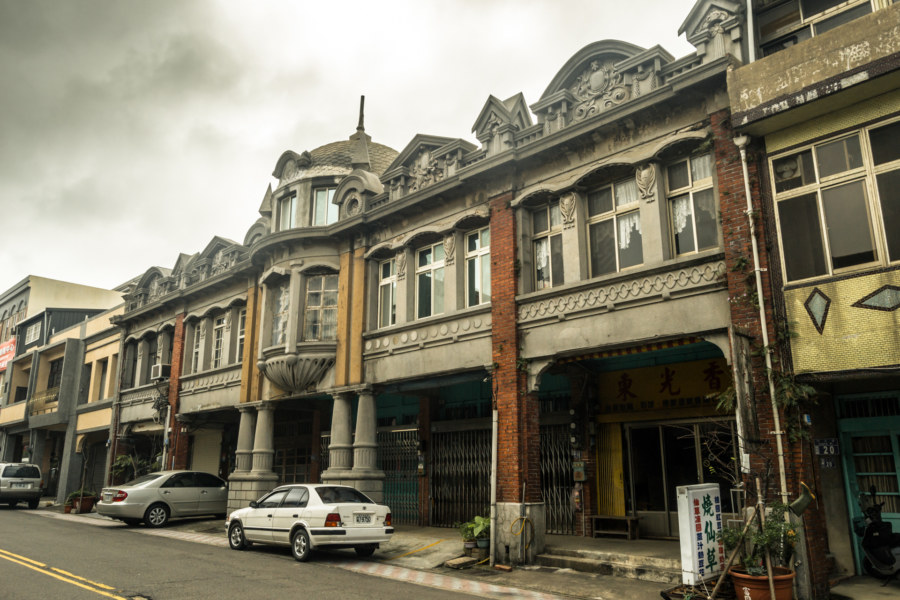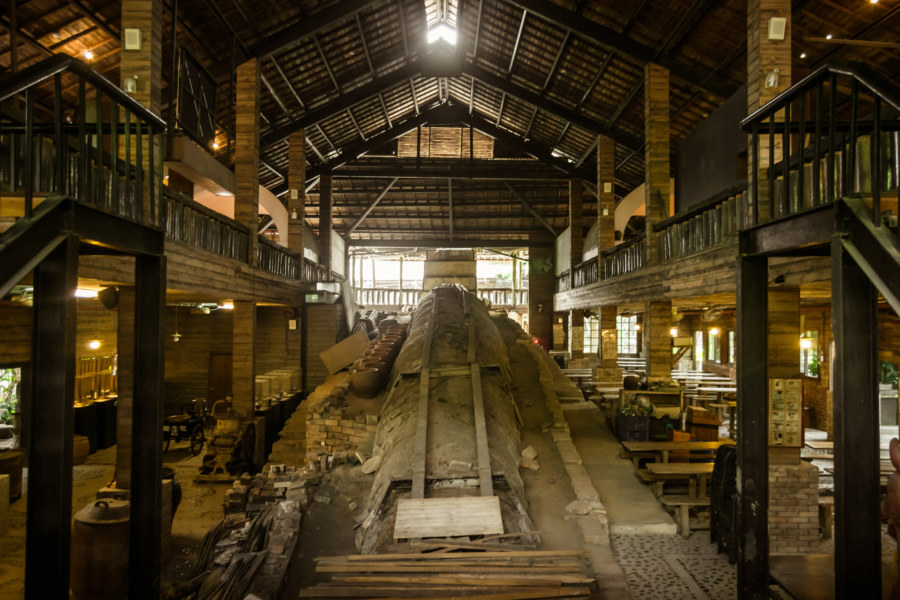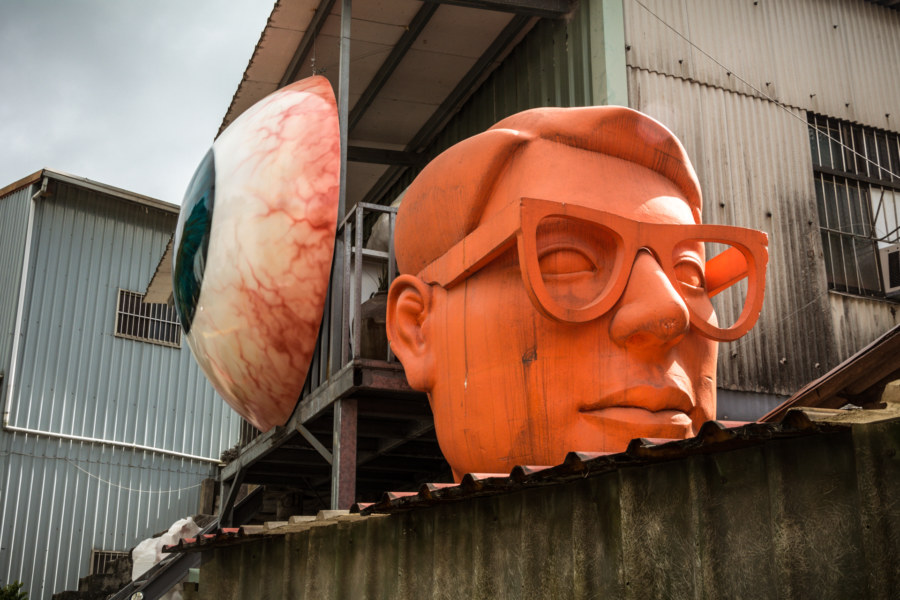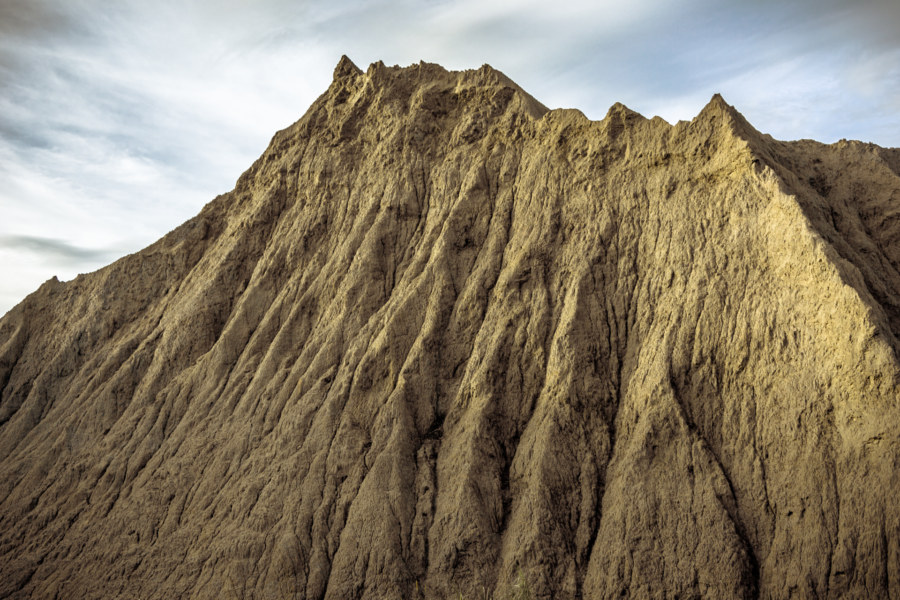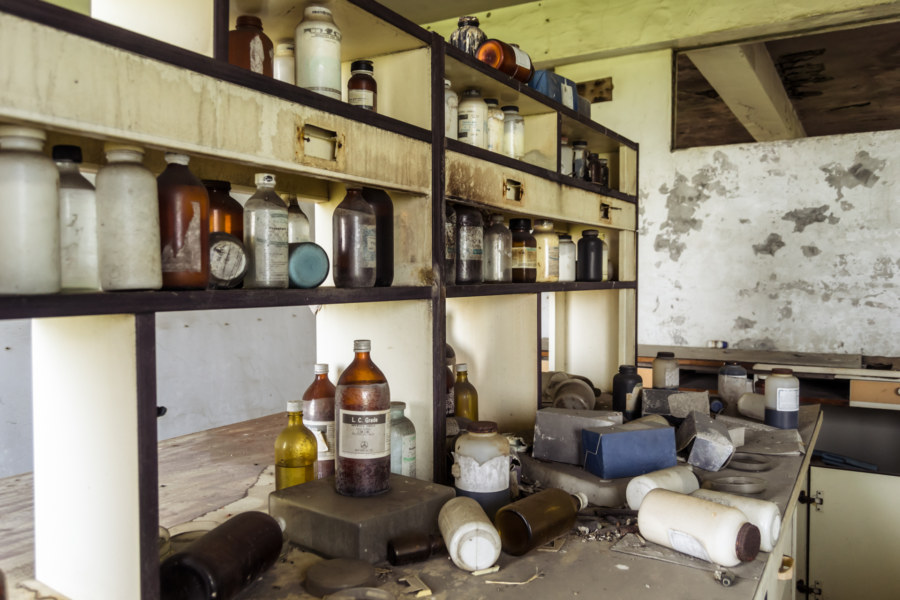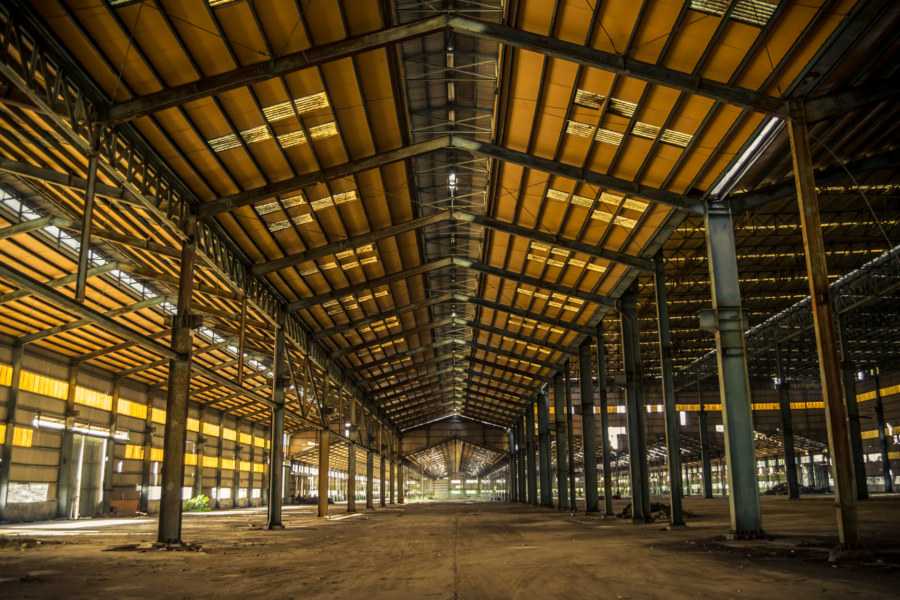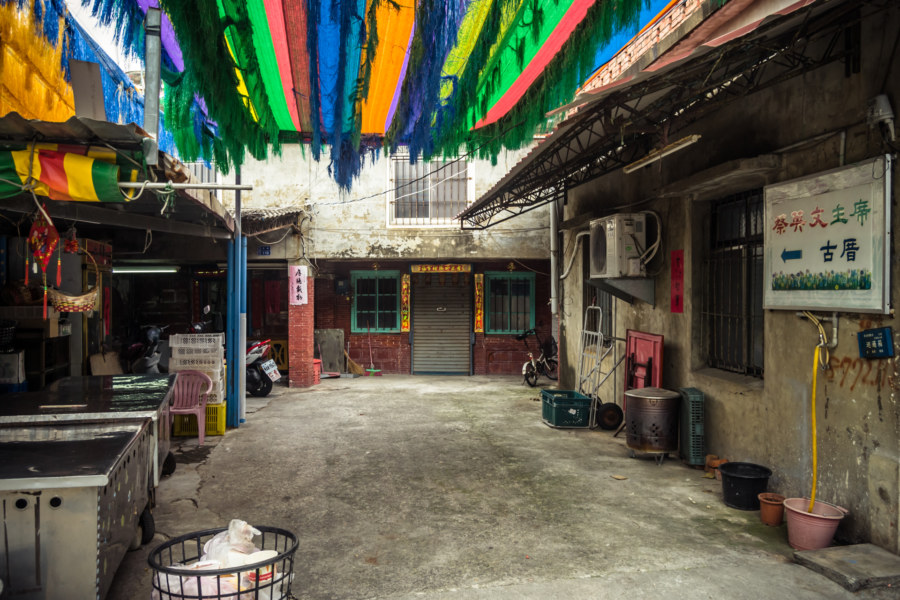I briefly visited Meinong in July of 2014 while cycling around southern Taiwan. I hadn’t done any planning prior to arrival and knew nothing of what I was getting myself into nor what sights I should have made an effort to see. I was navigating almost exclusively by instinct, riding in whatever direction seemed interesting, simply to see what was there. Gathered here are several of my photos from a few uninformed hours in this bucolic rural township in Kaohsiung.
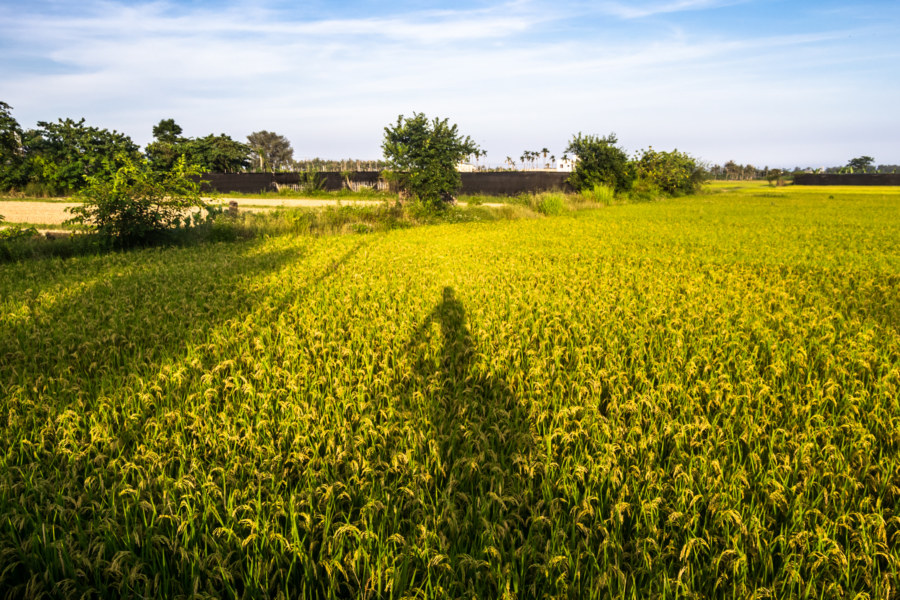
Dispatches from the countryside, beyond the dense urban cores, amidst the long fields and low buildings. See also: agricultural, landscapes, and mountains.
Adjacent Terms
Wansheng Zizhu Monastery 萬聖紫竹寺
Wànshèng Zǐzhú Monastery (萬聖紫竹寺) is an unusually austere temple located on the seaward slope of the Dadu Plateau (大肚台地) in Shalu, Taichung. At first I assumed it was abandoned, for there was absolutely nobody around when I visited. The main hall is in an obvious state of disrepair and the two flanking buildings remain unfinished. After wandering into both altars I left with more questions than answers. Apart from the Putuoshan White Temple it isn’t at all like most other temples I’ve seen in Taiwan.
Explorations of the Pacific Edge 1
These photos were taken two years ago after cycling through the Old Caoling Tunnel 舊草嶺隧道 into Toucheng, Yilan. The first set of six photos were all shot along the rugged shoreline of the Láilái Geological Area 萊萊地質區 while the last four were captured at Mǎgǎng 馬崗, a half-abandoned fishing village on Cape San Diego 三貂角 (pinyin: Sāndiāojiǎo), the easternmost tip of Taiwan. All were captured in Gongliao. From here the vast Pacific Ocean stretches all the way to Baja California in Mexico.
Fugang Old Street 富岡老街
Fùgāng Old Street 富岡老街 is an obscure anachronism in the western part of Taoyuan, Taiwan. It extends from a railway station that opened during the Japanese colonial era in 1929 through the heart of this small Hakka town. The coming of the railroad brought prosperity to the area and several ornate shophouses were built around the station in a mishmash of architectural styles common at the time. Nowadays it is just another street in rural Taiwan, albeit one with a little more history than most, possibly because it is too unimportant a place for modernization to have swept away these vestiges of the past.
Shuili Snake Kiln 水里蛇窯
The Shuili Snake Kiln 水里蛇窯 is a wood-fired pottery kiln on the outskirts of Shuili, Nantou. The name is derived from the kiln’s serpentine shape, though to my eyes it looks more like a slug than a snake. Founded in 1927 by master potter Lín Jiāngsōng 林江松, it remained a family business for generations before being opened to the public as a “ceramics park” in 1993.
Eye on the Road
It is hard not to notice the giant freaking eyeball and neon orange head hanging out at the side of the road leading up Hōnglúsāi Mountain 烘爐塞山 at the southern edge of Zhonghe, Taiwan. After taking in the scene I jokingly came up with a new slogan for the tourist bureau; “Taiwan: don’t ask why!” But of course that’s not really my style—I always like getting to the bottom of the seemingly inexplicable things I encounter in my travels here.
Exploring the Badlands of Southern Taiwan
The badlands of Taiwan are one of the nation’s most captivating and unusual landscapes. While there are several scattered around the country the most extensive badlands can be found along the hilly borderlands of Tainan and Kaohsiung. Known locally to Taiwanese as “moon worlds” (yuèshìjiè 月世界), these landscapes are composed of weathered mudstone outcrops that erode too quickly for plants to grow.
Peiyuan Industrial Aquaculture Factory 培源殖產工廠
Bicycle touring is one means by which I discover many abandoned places in Taiwan. Ride in just about any direction long enough, keep your eyes peeled, and you’re bound to encounter the telltale signs of decay and neglect sooner or later. Such was the case one fine morning in June 2015 when I set out to have breakfast in Fangliao, a small town along the coast of central Pingtung, while en route to Hengchun, at the southern tip of the island. I had barely been awake for half an hour when I noticed this partially overgrown ruin along the roadside.
Yutian Automotive Factory 羽田汽車工廠
The massive ruins of the Yǔtián Automotive Factory 羽田汽車工廠 are located on the Dayeh University campus in Dacun, Changhua. There are four main buildings, each approximately 360 meters in length and 90 meters across for an estimated total of 32,500 square meters apiece. Outside of the Changhua Coastal Industrial Park 彰化濱海工業區 in Lukang (which opened in 1995) these buildings are probably the largest in the county—and the entire complex is readily visible from space.
Tsai Ing-wen Old House 蔡英文古厝
Tsai Ing-wen’s childhood home in the village of Fenggang.
One of the more unexpected finds on my recent bicycle tour through the deep south of Taiwan was the childhood home of Tsai Ing-wen 蔡英文 (pinyin: Cài Yīngwén), current chairman of the Democratic Progressive Party and presidential contender in the upcoming 2016 general election. I was vaguely aware that she was born in Fangshan in Pingtung, the southernmost county in the nation, but hadn’t known any more than that prior to taking a short detour through the old fishing village of Fēnggǎng 楓港, founded in 1765 according to Chinese language Wikipedia. Imagine my surprise when I saw a small sign on the main road through town that directed me to Chairman Tsai Ing-wen Historic Home 蔡英文主席古厝!
When I arrived the courtyard was initially littered with trash. Several locals noticed my arrival and one quickly went to fetch a broom and clean up. I made what little conversation I could manage, not even knowing if my Mandarin was understood, and…
